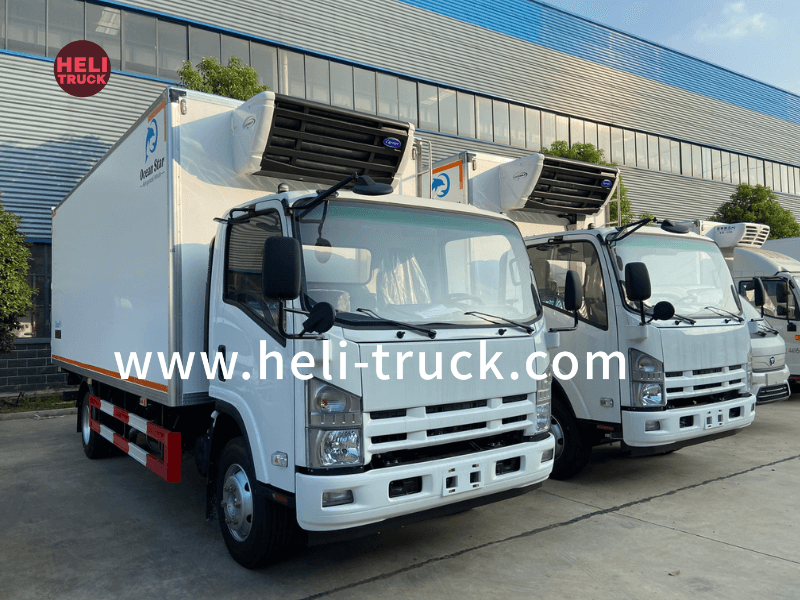Introduction:
Garbage compactor trucks play a crucial role in waste management, helping to collect and compact trash efficiently. These specialized vehicles come with a variety of features and specifications that cater to different needs and requirements. In this article, we will conduct a comprehensive comparison of various garbage compactor truck models, focusing on their key features and functionalities.
1. Types of Garbage Compactor Trucks:
There are several types of garbage compactor trucks available in the market, each designed for specific waste collection purposes. The most common types include rear loader compactor trucks, side loader compactor trucks, and front loader compactor trucks. Each type has its unique features and advantages, making them suitable for different applications.
- Rear Loader Compactor Trucks:
Rear loader compactor trucks are equipped with a hydraulic compactor at the rear of the vehicle. These trucks are commonly used for residential waste collection, as they can easily navigate through narrow streets and alleys. The rear loader design allows waste collectors to load trash from bins directly into the compactor, reducing manual handling and increasing efficiency.
- Side Loader Compactor Trucks:
Side loader compactor trucks feature a hydraulic compactor mounted on the side of the vehicle. These trucks are ideal for collecting waste from commercial and industrial establishments, as they can easily access large dumpsters and containers. The side loader design enables waste collectors to empty bins without the need for additional equipment or manual labor.

- Front Loader Compactor Trucks:
Front loader compactor trucks are designed with a hydraulic compactor at the front of the vehicle. These trucks are commonly used for collecting waste from large commercial complexes and municipal areas. The front loader design allows waste collectors to lift and empty dumpsters directly into the compactor, making the collection process quick and efficient.
2. Key Features Comparison:
When comparing garbage compactor trucks, several key features need to be considered to determine their suitability for specific waste management tasks. Some of the essential features to look out for include:
- Compaction Ratio:
The compaction ratio of a garbage compactor truck indicates how efficiently it can compress waste materials. A higher compaction ratio means that the truck can compact more trash into a smaller space, reducing the frequency of trips to the landfill. The compaction ratio varies among different truck models, with some offering better compaction capabilities than others.
- Loading Capacity:
The loading capacity of a garbage compactor truck determines how much waste it can collect and transport in a single trip. Trucks with larger loading capacities are more suitable for high-volume waste collection tasks, such as in densely populated areas or commercial establishments. It is essential to choose a truck with a loading capacity that matches the specific requirements of the waste collection operation.
- Hydraulic System:
The hydraulic system of a garbage compactor truck is responsible for operating the compaction mechanism and other essential functions of the vehicle. A robust and reliable hydraulic system is crucial for ensuring smooth operation and minimal downtime. Some trucks come with advanced hydraulic systems that offer enhanced performance and efficiency, making them more suitable for demanding waste collection operations.
- Safety Features:
Safety is paramount when operating garbage compactor trucks, as waste collection can involve various risks and hazards. Trucks equipped with safety features such as backup cameras, proximity sensors, and automatic braking systems can help prevent accidents and ensure the well-being of waste collection workers. It is important to prioritize safety features when selecting a garbage compactor truck to minimize the risk of incidents during operation.
- Maintenance Requirements:
Regular maintenance is essential to ensure the optimal performance and longevity of garbage compactor trucks. Some trucks are designed with easy-to-access components and simplified maintenance procedures, making them more convenient to service and repair. Considering the maintenance requirements of a truck is crucial to minimize downtime and operational costs over its lifespan.
3. Comparative Analysis of Popular Garbage Compactor Truck Models:
To provide a practical comparison of garbage compactor truck features, let's examine three popular models from leading manufacturers:
- Model A (Rear Loader Compactor Truck):
- Compaction Ratio: 5:1
- Loading Capacity: 10 cubic meters
- Hydraulic System: High-performance hydraulic pump
- Safety Features: Backup camera, rear proximity sensors
- Maintenance Requirements: Regular greasing and inspection intervals
- Model B (Side Loader Compactor Truck):
- Compaction Ratio: 4:1
- Loading Capacity: 15 cubic meters
- Hydraulic System: Advanced proportional control valves
- Safety Features: Side proximity sensors, automatic braking system
- Maintenance Requirements: Self-lubricating components, extended service intervals
- Model C (Front Loader Compactor Truck):
- Compaction Ratio: 6:1
- Loading Capacity: 20 cubic meters
- Hydraulic System: Variable displacement piston pump
- Safety Features: Front proximity sensors, emergency stop button
- Maintenance Requirements: Sealed hydraulic hoses, onboard diagnostics system
4. Conclusion:
Garbage compactor trucks are essential vehicles in the waste management industry, offering efficient and reliable solutions for collecting and compacting trash. By considering key features such as compaction ratio, loading capacity, hydraulic system, safety features, and maintenance requirements, waste management professionals can select the most suitable truck for their specific needs. Conducting a comparative analysis of popular garbage compactor truck models can help in making informed decisions and maximizing the efficiency of waste collection operations.
